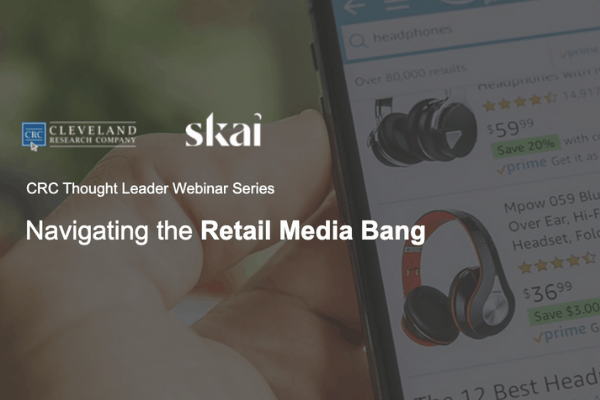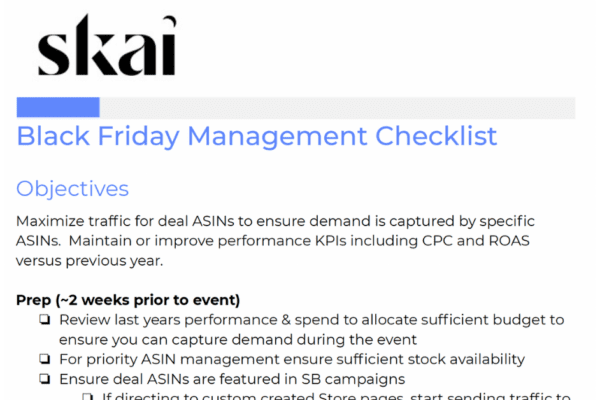
Understanding the reasons behind why customers choose one brand over another or one product over another is nothing new, but in 2022 retail customer intelligence has taken on a whole new meaning as customers who began shopping online out of necessity during the pandemic have embraced those behaviors even as they have increasingly started to return to in-store shopping.
What is retail customer intelligence?
Simply put, retail customer intelligence is the information companies can collect around a customer’s reasons for interacting (or not interacting) with a brand. Retail customer intelligence can come from various sources, including purchase history, feedback, content a customer interacts with online, and even subscription cancellations.
But for advertisers looking to use retail customer intelligence to improve the retail experience based on changing shopping behavior amid the pandemic, there are a few new ways to glean new insights around the traditionally standard types of customer intelligence.
Here are a few retail customer intelligence insights for 2022 and beyond.
Online shoppers are not who you think they are
Identity data is the most fundamental piece of the retail customer intelligence puzzle. This type of data focuses on name, age, gender, and location, among other audience segments. Having retail customer intelligence around these identity questions better enables advertisers to predict customer preferences since so much of a product’s appeal has to do with a customer’s stage in life.

However, traditional retail wisdom says that only younger generations, like Millennials and Gen Z, discover new products online, while Boomers have preferred in-store shopping. Since the pandemic’s beginning, the idea that Boomers are not shopping online or via mobile has become obsolete. While every demographic adopted online shopping over the past two years, Boomers really embraced the trend.
During the pandemic, First Insight noted an astonishing shift. In a 2020 survey, the number of Boomers reporting that they planned to shop online had jumped from 8% to 34%.
While it is highly likely that many of those who embraced ecommerce during the pandemic will return to at least occasional in-store shopping soon, if they have not already, retailers would do well to re-evaluate who exactly is interacting with their brand online and how in-store and online strategy needs to evolve to meet new audiences.
Loyalties Are Shifting
Attitudinal data is another type of retail customer intelligence that focuses on direct feedback about how consumers feel about brands and products and their interactions with brands and their products, both online and off. And while surveys and other forms of consumer feedback have always been an essential part of retail customer intelligence, in 2022, they are absolutely crucial.
According to McKinsey, many shoppers shifted their loyalties during the pandemic, with 36% of consumers reporting that they tried a new brand and 73% of those who tried a new brand planning to shift that brand into their routine.
Understanding the demographic data of the customers whose brands gained during the pandemic and which customers they lost is an excellent way to both shift focus to building on loyalties fostered during the pandemic and win back loyalists who were lost. In addition, focus on analyzing customer feedback on surveys, reviews, and through customer support channels because the reasons customers love (or left) your brand may now be surprising.

Engagement Has Changed
Traditionally, retail customer intelligence has focused its insights into customer engagement around how a customer interacts with a brand, measuring things like content clicks and email opens, just to name a few.
But during the pandemic, as customers could not walk into a store and ask an associate a question, the term engagement took on a whole new meaning. In 2022, many customers expect to reach a retailer in multiple ways across many devices and in-store, but they will also go elsewhere for these experiences. As Forbes recently wrote, “A good product is no longer enough.” Communication is key. Take, for example, the new ways Galeries Lafayette, an upmarket department store chain based in France, has chosen to support its customers:
“[Galeries Lafayette enlisted] personal stylists to communicate directly with customers, building customer engagement and integrating the physical and digital retail experience. These stylists can sign up customers and then communicate with them on SMS, WhatsApp, or through voice calls—letting them know things like upcoming sales, new pieces from hot collections, or offering general sartorial advice.”
And while it is likely not possible for every retailer to provide similar services, providing a robust opportunity for customer feedback on every platform and including helpful tools like a FAQ section on every brand platform that supports it, as well as making sure your brand is creating informative product pages on applicable third-party seller sites like Amazon, Walmart, and Instacart (to name a few) are incredibly useful for making sure post-pandemic shoppers can have their questions answered with minimal effort.
Retail customer intelligence is about more than gathering data; it’s more about collecting data intelligently. Looking for ways your customers have changed rather than simply asking who they are and what they bought is the most intelligent way to serve customers in a post-pandemic world.
Skai helps marketers align to the new commerce funnel
Skai empowers the world’s leading brands and agencies across industries to manage omnichannel digital marketing campaigns. Our omnichannel marketing platform includes solutions for retail media, paid search, paid social, and app marketing. We’ll keep you at the forefront of the digital evolution with data and insights, marketing execution, and measurement tools that work together to drive powerful brand growth.
For more information or to schedule a quick demo to see all of Skai’s cutting-edge features for yourself, please reach out today.






